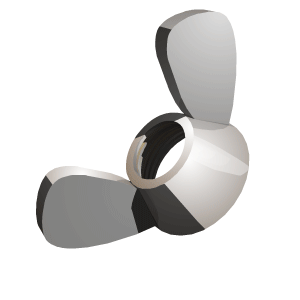Often people in twelve step programs say they don't know really know how to meditate. Sometimes this answer is returned: prayer is talking, meditation is listening. As far as it goes, that is a fairly good answer, but does not open up the deep possiblities of true meditation. For one thing, listening is an action while meditation is an absence of action.
Also, some people who have studies formal meditation have fould it specific to a certain religion. The broader concept of twelve step spirituality is called for here. Without intending to change any part of the twelve steps, it seems reasonable to suggest that God-as-we-understand-Him is really one word; often expressed as "Higher Power." For our purpose let's think Higher Power. That will give choice of HP name as well as remove possible gender objection.
So: "Sought through … meditation to improve our conscious contact with Higher Power"
Three people have been impressive to me:
- Ed Hays of Kansas who writes about silent prayer, silent outside and silent inside. If achieved, this prayer is most profound.
- A friend, Tom H. who went to Japan to study 8 hours a day for 8 days with meditating monks in a Zen monastery.
- John Main, a western Christian monk who wrote books on Western meditation after years in eastern Asia where he learned the art. From these three and others, plus A.A. experience, the following is derived:
Suggested process:
- In a quiet place, sit in a straight-backed, firm chair with your back comfortably straight, shoulders high, feet on the floor, hands in your lap, eyes three-fourths open and downcast. Closed eyes are OK, but then it's harder to stay awake. Breathe regularly. Special cushions and low stools are available for those with supple knees in a "lotus position," but a chair is considered OK.
- The two mo st popular focus methods seem to be: a) Mentally follow your breath; breathe in, breathe out. b) Use of mantra. Choose one word suitable for a spiritual atmosphere and easy to say. Say it repeatedly in your mind, or out loud. Choose a word to stick with; changes do not work well.
- Whichever method you select; begin the process. Be prepared: a) For the monkeys in the trees. As you check your breath or say your mantra, your mind will wander like monkeys in trees, within seconds and often; don't be discouraged; just return to quiet and start over. b) To be patient; it takes a long time to lear how to meditate well.
- This session is intended to be a practice. It will start with a 5 minute meditation using either breath focus or mantra, followed by a brief discussion of your reaction. Then a 10 minute meditation with another discussion. If time and energy permits, another meditation period of 10 minutes will follow.
A desirable goal for your own use is said to be twenty minutes. Start with once a day. As you progress, you may find twice a day worthwhile.
This effort is intended to help people who practice 12 Steps to "do" the 11th Step better. However, most find that long term meditation has other beneficial side effects, both emotionally as well as physical.. Besides "improving our conscious contact," the practice becomes great therapy.
Presented by Don B. at Highland A.A. on Sunday, 17 February, 2000
